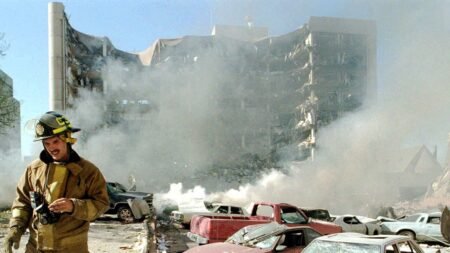The Big Apple may soon be flush with shiny new toilets.
A bill passed by City Council Thursday directs officials to come up with a plan to create a citywide network of public restrooms.
“Right now we don’t have a plan. We don’t have a strategy. We have a hodgepodge of agency-specific processes that create a disjointed, stunted and some might call foul approach,” bill sponsor, Councilmember Sandy Nurse said Thursday before the council unanimously voted in support of the legislation.
The bill directs the city to develop a longterm bathroom plan that will be updated every four years with the goal of adding at least 2,120 public bathrooms to the city by the year 2035 — half of which would be publicly owned.
New York City currently has about 1,100 public toilets for its 8.6 million residents — or about one toilet per 7,800 residents.
Nurse’ legislation aims to achieve a “target ratio” of one toilet per 2,000 city residents.
“We’re a growing city,” Nurse said. “But somehow we’ve failed to address this issue.”
The NYPD issued 9,904 criminal and civil summonses for urinating in public during fiscal year 2024 — a 46 percent increase from the previous year, according to the mayor’s preliminary management report.
“No one should have to experience the humiliation or stress of having to relieve themselves out on the street,” Nurse said.
Nurse said more bathrooms would cut down on public urination summonses.
A fiscal impact statement from both the mayor’s office and city council said the bill will not cost taxpayers any money since it only directs the Department of City Planning (DCP), the Department of Parks and Recreation (DPR) and the Department of Transportation (DOT) to plan for the toilets — the legislation does not direct the agencies to build the toilets.
But Nurse said the bathrooms will be expensive.
“For example, a park bathroom with a woman and a man separate areas, brick and mortar is almost like $3 to $5 million,” Nurse said, adding that it takes about five years to build.
A spokesperson for the New York City Department of Parks did not immediately respond to The Post’s inquiry about the public restroom cost.
Nurse said she hopes the planning period will help the city agencies find ways to cut costs of the pricey public toilets.
“There are new models out there. There are new ways that other cities are achieving the goals of a bigger bathroom network, and we’re just starting to get on board with that,” Nurse said.
A public toilet in San Francisco’s Noe Valley neighborhood went viral as an example of government waste when it was initially priced at $1.7 million in 2022. After receiving donations, the city went with a prefabricated bathroom and the total project’s cost ended up around $200,000 when the bathroom opened last year.
“I have a modular unit in my district called the Portland Loo. It’s the first one in Brooklyn. It cost just under a million dollars and it took just under a year to build. We should be aggressively pursuing options like that,” Nurse said.
But in New York City more toilets doesn’t always equate to more opportunities to go to the bathroom. A report on the state of public restrooms in New York City, released by City Council last fall, said two-thirds of all restrooms inspected for the report were closed or had health and safety issues rendering them unusable.
The Council also found 10 percent of bathroom stalls didn’t have functioning locks, 10 percent of restrooms lacked soap, 13 percent didn’t have toilet paper and there was garbage strewn about in nearly 40 percent of the bathrooms, according to the report.
“Parks and every single agency needs to do better to maintain all of our public spaces, our plazas, our parks, our bathrooms, our trash. Everything needs to be better invested in. We need more capacity,” Nurse said.
A spokesperson from the Parks department did not immediately respond to an inquiry from The Post about the cleanliness of park bathrooms either.
Mayor Eric Adams still has to sign the bill before it becomes law. He supported a plan to add 46 more public restroom to New York City last June.
“We need to put the resources to maintain our public spaces so that we can enjoy spending time outside and that includes places to use the bathroom,” Nurse said.
Read the full article here
















